Stainless steel baking sheets are a staple in many kitchens, prized for their durability, versatility, and sleek appearance. However, even though they are known for their resilience and resistance to rust, it’s common to notice that these baking sheets can sometimes stain over time. While the stains are often harmless, they can make your once-pristine baking sheets look worn or dirty. So, why do stainless steel baking sheets stain, and how can you prevent it?
Today, our Economical Chef’s team brings you into the science behind the stains and offers some practical solutions to keep your bakeware looking brand new again.
Check Amazon Kitchen Haul For The Affordable Gadgets
So, Why Do Stainless Steel Baking Sheets Stain?
From our research and experiences, three are five factors that cause the baking sheet stain:
1. High Heat Exposure
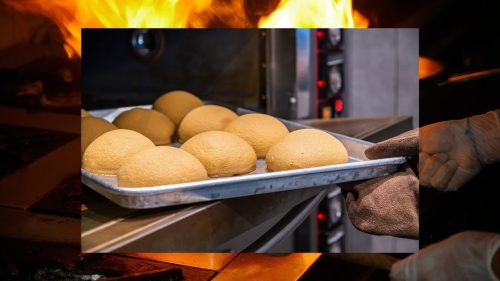
Stainless steel is incredibly heat-resistant, but it’s not immune to the effects of high temperatures, especially when exposed to them for prolonged periods. When stainless steel baking sheets are used in extremely hot ovens, they can discolor, forming heat spots or stains. These are often yellow, brown, or even blue in color and occur because the metal’s surface reacts to extreme heat.
The surface of stainless steel forms a thin oxide layer, which serves as a protective barrier. However, when exposed to excessive heat or direct flames, the oxidation process can cause the surface to change color. This is a natural reaction and is not harmful but can result in unsightly stains.
2. Acidic or Alkaline Foods
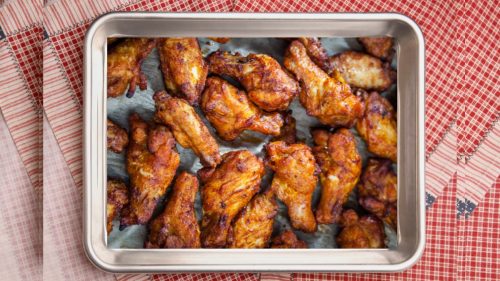
Certain foods, especially acidic or alkaline ones, can react with the surface of stainless steel and cause discoloration. Ingredients like tomatoes, citrus, vinegar, or even some baking sodas can create chemical reactions with the metal, resulting in staining or spotting. The reaction occurs because the acidity or alkalinity can break down the protective oxide layer of the stainless steel, leaving the metal susceptible to discoloration.
3. Hard Water and Mineral Deposits

If your water is hard, meaning it contains high levels of minerals like calcium and magnesium, you might notice mineral deposits left behind on your stainless steel baking sheets after washing them. These white, chalky marks are often difficult to remove and can cause the metal to look cloudy or dull.
When water evaporates, it leaves these minerals behind. Over time, the accumulation of these minerals can lead to staining, especially when the surface is exposed to heat or detergent residue.
4. Improper Cleaning Techniques
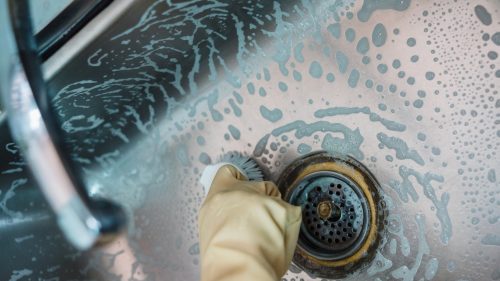
While stainless steel is relatively low maintenance, improper cleaning methods can contribute to staining. If you use harsh cleaners, abrasive scrubbing pads, or leave detergent residue on your baking sheets, it can affect the surface of the stainless steel and lead to staining. Additionally, not drying the baking sheet properly after washing it can result in water spots or streaks that might appear as stains.
5. Food Residue and Grease

Baked-on food residue and grease can leave marks or stains on your baking sheets, especially if the food is allowed to bake onto the surface without being cleaned off properly. The oils and fats from foods can seep into the metal’s surface, creating a discolored stain or film.
How to Prevent Stainless Steel Baking Sheets from Staining
1. Use Parchment Paper or Silicone Mats
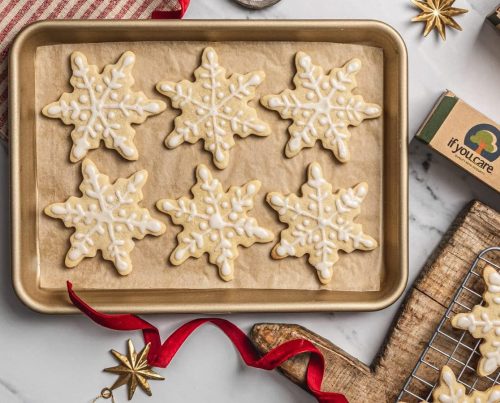
To minimize the risk of stains from baked-on food or oils, consider lining your stainless steel baking sheet with parchment paper or using silicone baking mats. These materials create a protective layer between the food and the metal, reducing the likelihood of direct contact that could cause staining.
2. Avoid Extreme Heat
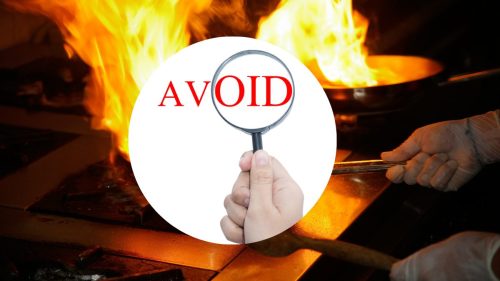
While stainless steel is known for withstanding high temperatures, it’s still a good idea to avoid exposing it to extreme heat for prolonged periods. Try to follow the recommended temperature settings for your baking recipes, and avoid cooking at the highest heat setting for too long. If your recipe calls for a very high oven temperature, consider using a different material, such as aluminum, which is better suited for extreme temperatures.
3. Clean Immediately After Use
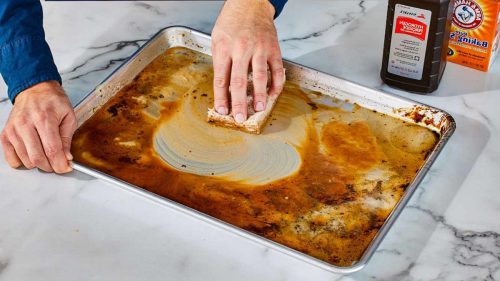
The best way to prevent staining from food residue is to clean your stainless steel baking sheet as soon as it cools down. Scrape off any food particles and wash the sheet with warm water and mild dish soap. For tougher residue, use a soft sponge and avoid abrasive scrubbers that could damage the surface. If the food has baked on, you can use a paste of baking soda and water to gently scrub away the stains.
4. Use a Gentle Cleaning Solution
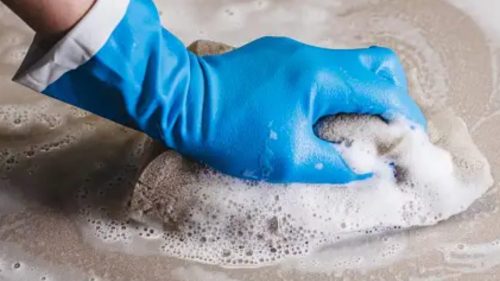
If your baking sheet has become discolored or developed stains, avoid using harsh chemicals or abrasive cleaners. Instead, opt for natural cleaning solutions such as a mixture of vinegar and water, or a paste of baking soda and water. These solutions will help break down grease and food residue without damaging the stainless steel surface. For mineral deposits from hard water, you can use a mixture of equal parts water and vinegar to gently wipe away the stains.
5. Dry Thoroughly After Washing
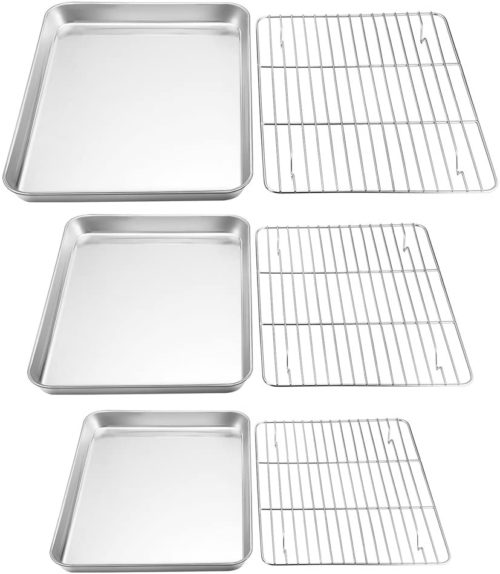
After washing your stainless steel baking sheet, make sure to dry it thoroughly with a soft cloth or towel. Leaving water droplets on the surface can lead to water spots or streaks, which may look like stains. By drying your baking sheets right after washing, you can prevent these unsightly marks from forming.
6. Season Your Baking Sheets
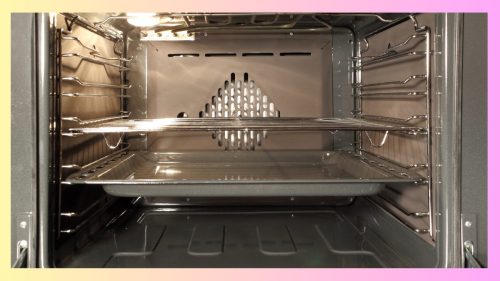
Some bakers recommend “seasoning” stainless steel baking sheets, similar to how cast iron cookware is seasoned, to build a natural non-stick layer and prevent food from sticking and staining. To season your stainless steel sheet, lightly coat it with a small amount of vegetable oil and heat it in the oven for about an hour at 350°F. This process creates a protective layer on the surface that can help reduce staining and improve performance.
7. Use Distilled Water

If you live in an area with hard water, consider using distilled water to wash your stainless steel baking sheets. Distilled water lacks the minerals found in tap water, which helps prevent mineral deposits and spots from forming on your bakeware.
Conclusion
Stainless steel baking sheets are durable and a fantastic choice for most baking needs, but they are not immune to stains. High heat, acidic foods, hard water, and improper cleaning techniques can all contribute to discoloration and stains. However, by taking a few simple steps—such as using parchment paper, cleaning promptly, using natural cleaning solutions, and drying your baking sheets thoroughly—you can preserve the look and performance of your stainless steel bakeware for years to come.
We hope our sharing and provided solutions help you understanding why staining occurs and how to prevent it, ensuring your stainless steel baking sheets remain in top condition, giving you the best results for your baking endeavors.
Don’t Forget to Check Amazon Haul for Affordable Kitchen Gadgets